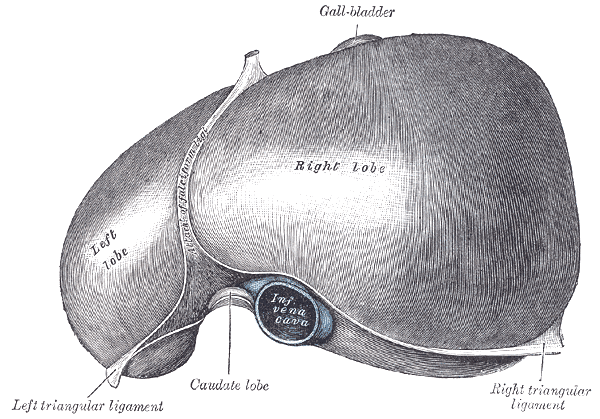
How much of your liver can you live without? Surprisingly, you can survive with only 25% of your liver.
Where is your liver and what does it do? The liver sits just above your stomach. It weighs about 1.5 kg and is the largest organ in the body if you don’t count the skin. The organ performs 500 different tasks in the body and it is a vital organ. If you lose your liver and cannot get dialysis, you would die in about two days.
Here are some of the things that the liver does. The liver regulates the chemical levels in the blood. To do this, 13% of the body’s blood is in the liver at any one time. The liver produces bile which carries away waste and breaks down fats during digestion. It produces proteins for blood plasma. It produces cholesterol. It converts glucose into glycogen so that it can be stored. It regulates amino acids. It processes hemoglobin and stores the iron. It cleans the blood of drugs and poisons. It regulates blood clotting. It removes bacteria from the bloodstream.
All of the blood leaving the stomach and intestines passes through the liver. Anything we eat, drink, or have injected into us goes to the liver in the end. The liver removes toxins, stores nutrients, and keeps the sugar in our blood stream constant. Without the liver we would simply shut down and die.
If you happen to have damaged your liver, there are two solutions. The first is dialysis, which is not a permanent solution. Dialysis works by doing some of the jobs that the liver was supposed to do. It cleans your blood of toxins. A needle is inserted in each arm, the blood is drawn out of one arm, passed through the dialysis machine where it is cleaned and then the blood is pumped back into the body. It takes four to six hours, and this has to be done three times a week.
The dialysis machine works by filtering the wastes and toxins out of the blood. The blood enters the machine and is forced through a part of the machine called a dialyzer. It is separated in the middle by a core that is made up of thousands of tiny mesh tubes. The blood flows on one side and a fluid made up of water, electrolytes, and salts, called a dialysate flows on the other side. The tiny pores let waste and toxins cross over from the blood to the dialysate and the cleaned blood can be checked and then returned to the body.
Dialysis is not a permanent solution for liver damage because it cleans the blood, but it doesn’t do all the other myriad things that the liver does. Which is why the second solution is a liver transplant. A liver is usually transplanted from a deceased donor. 94% of liver transplants performed were from a deceased donor. However, a living person can make a liver donation. That is because you can survive without all of your liver.

4% of liver donations were from living donors. In these kinds of donations, up to 70% of the liver can be removed from the donor. It will either be the right lobe, which is 60 to 70% of the liver, or the left lobe, which is 30 to 40% of the whole liver. The removed liver is transplanted into the recipient and the surgery is complete. The recipient will have to take immunosuppressant drugs and the new liver might fail, but it is a liver from a living person.
So, how much of your liver can you live without? 25% of your liver is enough for it to keep doing its job. It will keep producing bile, cleaning the blood, processing glucose, and all of the other things that it does. The part transplanted into the other patient will also start doing the same. However, the amazing part is that the liver will immediately begin to regrow.
The liver is the only organ in our body that can regrow if part of it is removed. Within five hours of part of the liver being removed, hundreds of genes will be activated. Blood clots form to stop any bleeding and then the cells in the liver start to divide. They keep dividing until the liver returns to its original size and they are switched off. Depending on how much is removed, it takes about four to six weeks for the liver to regenerate. The liver can also regenerate if a large number of cells in it are killed by a toxin, such as a drug overdose. It is an incredibly versatile organ.
So, how much of your liver can you live without? You can survive without 75% of it. The remaining 25% will be enough to keep you alive while the rest takes a few weeks to regrow. It is an incredible organ. And that is what I learned today.
Sources:
https://www.hopkinsmedicine.org/health/conditions-and-diseases/liver-anatomy-and-functions
https://healthblog.uofmhealth.org/what-does-the-liver-do
https://www.nhs.uk/conditions/dialysis/what-happens/
https://www.freseniuskidneycare.com/treatment/dialysis/hemodialysis-machine
https://www.healthline.com/health/can-you-live-without-liver
https://kids.frontiersin.org/articles/10.3389/frym.2017.00038
https://share.upmc.com/2017/04/can-you-live-without-a-liver/
